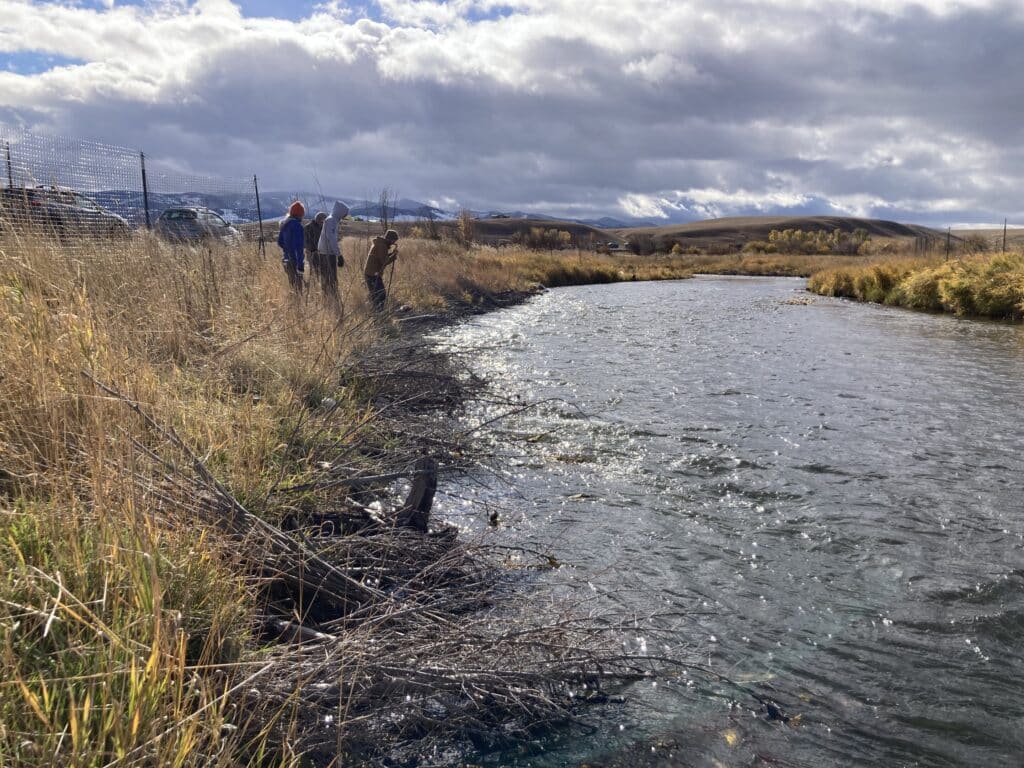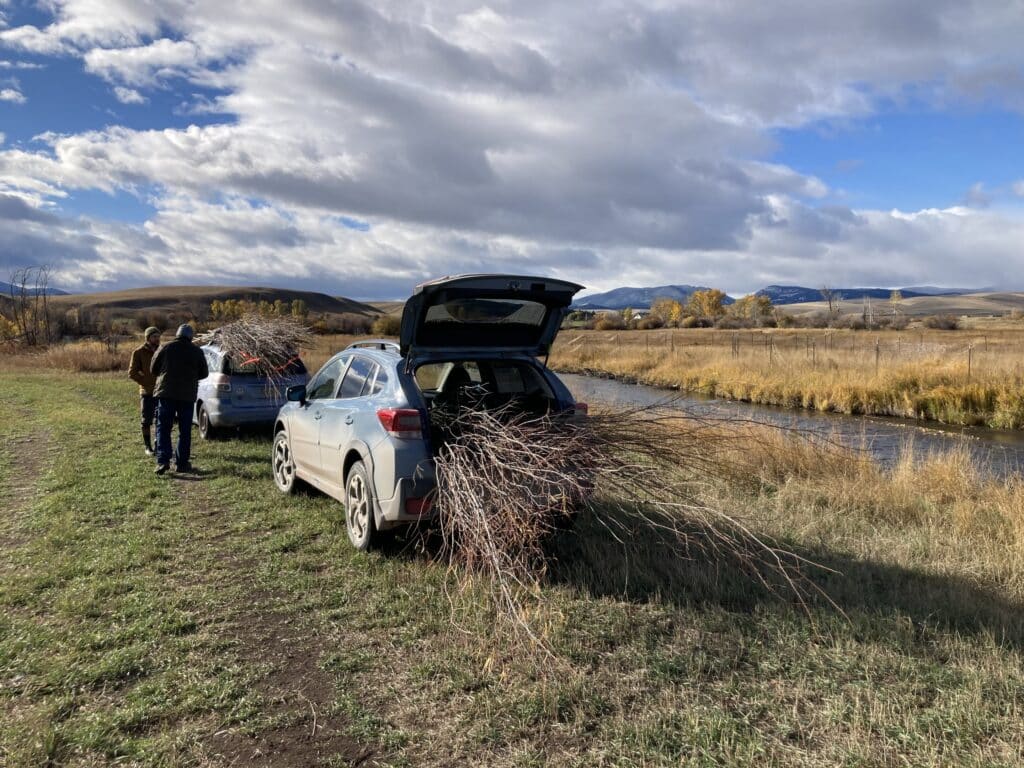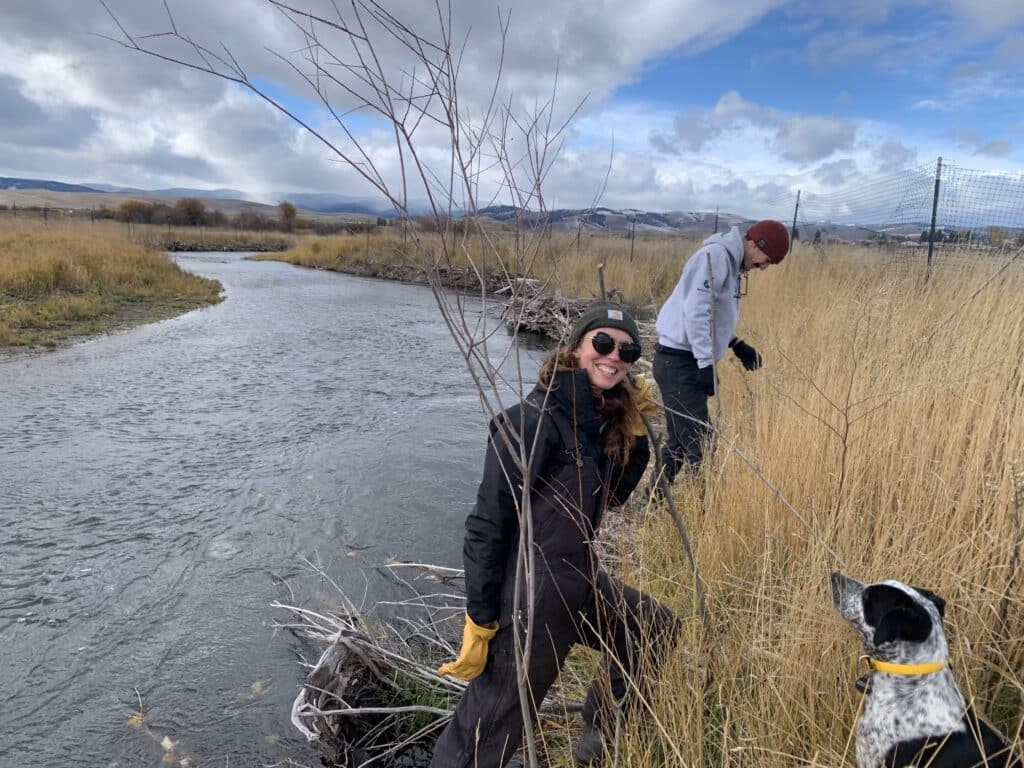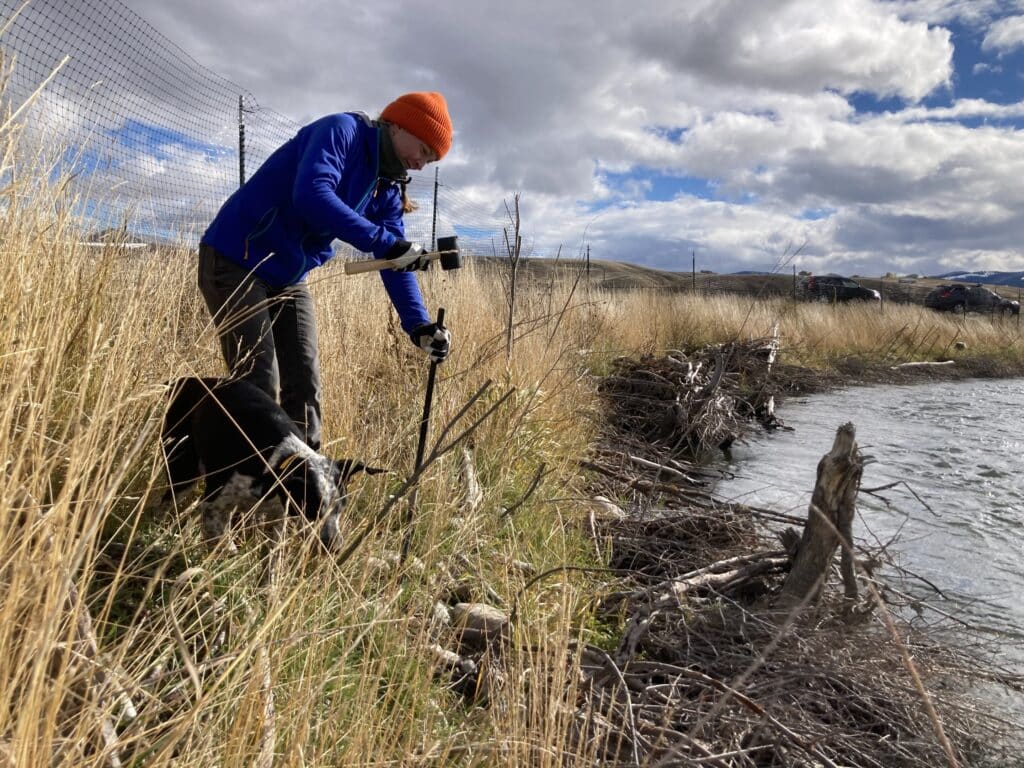
Stream restoration and Willow planting site on Flint Creek, Photo by MWF staffer Ilona Wilde.
Did you know that willows along streams and rivers play a huge role in preventing erosion while also creating cover and food for insects and fish? Willow’s root systems hold banks and shorelines in place, their shade keeps the water cool and healthy for fish, and insects like Caddis and Salmonflies use the cover of willows to stage their reproduction.

Willows are being transported from a nearby creek to the restoration site. Photo by MWF staffer, Ilona Wilde.
There are over four hundred species of willows around the world, with at least 45 species present in Montana. Thanks to the plant’s natural rooting hormone, willows can be easily transplanted and established by planting the stems into the water table, a process called live staking. For thousands of years, willows have been collected and utilized for many uses including harnessing their root growth hormones, which can be brewed into a “tea” to create a rooting solution for other plants. Willows have also been used medicinally for many generations in Indigenous cultures and contain the anti-inflammatory sagen Salicin, the original ingredient of aspirin.
The Willow Alliance for Graduate Education and Professoriate (AGEP), a collaboration between Salish Kootenai College, Sitting Bull College, and the University of Montana, explains: “In a number of Native American cultures, willows symbolize inner wisdom; an open mind with the stability and strength of age and experience. Willows represent flexibility and adaptation, surviving and thriving in challenging conditions.”

MWF Western Field Representative Ilona Wilde and a BSWC member are planting willows along Flint Creek. Photo by Bonnie Goslin.
In an effort of collaborative stream restoration, MWF’s Western Field Representative Ilona Wilde, accompanied by her faithful 4 legged field assistant Skylark, recently joined Trout Unlimited and Big Sky Watershed Corps (BSWC) members for a brisk autumn day of planting willows on Flint Creek outside of Hall, Montana. Over 700 willows were collected nearby the week prior, and the crew dug holes with a hydraulic stinger, rebar, and mallets to submerge the willow cuttings into the water table along the creek.
This project has been a multi-year collaborative effort by many groups including Trout Unlimited, Granite Headwaters Watershed Group, and private landowners to restore a stretch of Flint Creek identified as having high potential for water quality and wildlife improvement. The first step of the project included channel improvement and deepening pools throughout the stretch of the creek. The next step was enhancing riparian vegetation where much of the woody vegetation has been overgrazed. After fencing off the surrounding woody vegetation from grazing, the final stage of this restoration process is establishing willows along the banks.

A crew member uses rebar and a mallet to dig a hole 2 feet deep to plant willows into. Fenced in woody shrub areas can be seen in the background. Photo by MWF staffer Ilona Wilde.
The total restoration process included approximately 4,000 willow cuttings, 10 large wood structures, over 2,000 wood plants installed in 12 wildlife-fenced planting units, and an improved fencing system for grazing management. Efforts of planting willows in high density along this stretch will not only stabilize the streambank and improve habitat but their shade will also keep water temperatures down for Montana’s cherished coldwater trout fisheries.

For more information on Trout Unlimited’s Efforts to restore the watershed, visit tu.org
For more information on Willow AGEP: A Model to Advance Native American STEM Faculty, please visit their website to read about their work on Indigenous Science throughout Montana.
By Western-South Central Field Representative Ilona Wilde

